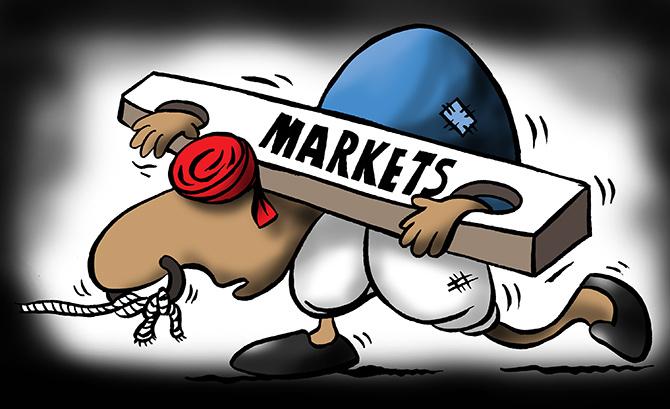VIX is meant to indicate investors’ perception of the annual market volatility over the next 30 calendar days.
The higher the value, the higher is the expected volatility and vice versa.
VIX touched its historical peak of 85.13 on November 17, 2008, in the aftermath of the collapse of Lehman Brothers.
In the past five years, it has stayed below 30.

India VIX, a measure of investors’ perception about the risk of sharp swings based on options prices, rose to its highest level since the 2008 global financial crisis as fear gripped markets worldwide after COVID-19 was declared a ‘pandemic’.
The fear gauge slid nearly 30 per cent on Thursday to 41.16, even as the Nifty dipped 8.3 per cent.
VIX is meant to indicate investors’ perception of the annual market volatility over the next 30 calendar days.
The higher the value, the higher is the expected volatility and vice versa.
VIX touched its historical peak of 85.13 on November 17, 2008, in the aftermath of the collapse of Lehman Brothers.
In the past five years, it has stayed below 30.
The CBOE Volatility Index (VIX), another popular fear gauge which measures the short-term volatility of S&P 500 indices, has shot up 65 per cent in the past five sessions.
“We have witnessed so many corrections in the past 10-12 years, but the kind of volatility and ferocity we are seeing across the globe is quite abnormal.
"Traders should adopt a wait-and-watch approach and avoid leveraged trades in such volatile markets,” said Sameet Chavan, chief analyst–technical & derivatives, Angel Broking.
According to experts, the Nifty has continued its lower top-lower bottom formations, a trend seen in the last four weeks, and witnessed a sharp selling towards 9,500 zones.
The Nifty ended Thursday at 9,590.
“Global bourses are witnessing intraday swings of 5-10 per cent and traders are advised to avoid bottom fishing as the massacre may continue in coming days.
"Resistance is gradually shifting lower to the 10,000-zone, while support is now at 9,119 and 8,970 levels for the Nifty,” said Chandan Taparia, derivatives analyst at Motilal Oswal Financial Services.
The Nifty has formed a large bearish candle and the relative strength index (RSI) oscillator has dug further into the oversold territory.
The RSI is a momentum oscillator that measures the speed and change of price movements and oscillates between zero and 100.
The RSI is considered overbought when above 70 and oversold when below 30.
Maximum call open interest (OI) is at the 12,000-strike, while the maximum put OI is at the 9,500-strike.
Call writing was seen at 10,000 and 10,200 strikes, while put writing was at 9,000 and 9,500 strikes, and sliding lower.
“Option OI data is scattered and shifted at various strikes as many put writers got trapped in the recent market fall and the unwinding pressure could keep the Street under pressure.
"The options data indicates a shift in wider trading range between 9,000 and 10,000 zones,” said Taparia.
OI indicates how many options contracts are currently outstanding or open in the market.
When writing a put, the writer agrees to buy the underlying stock at the strike price if the contract is exercised.
Writing a call gives the buyer the right to buy a stock at a certain price by a certain date.











